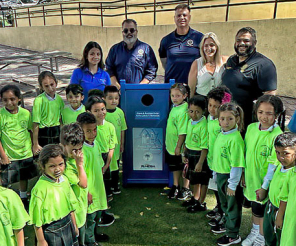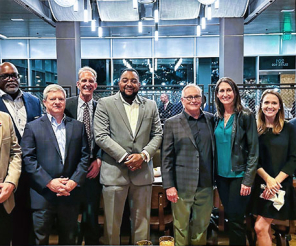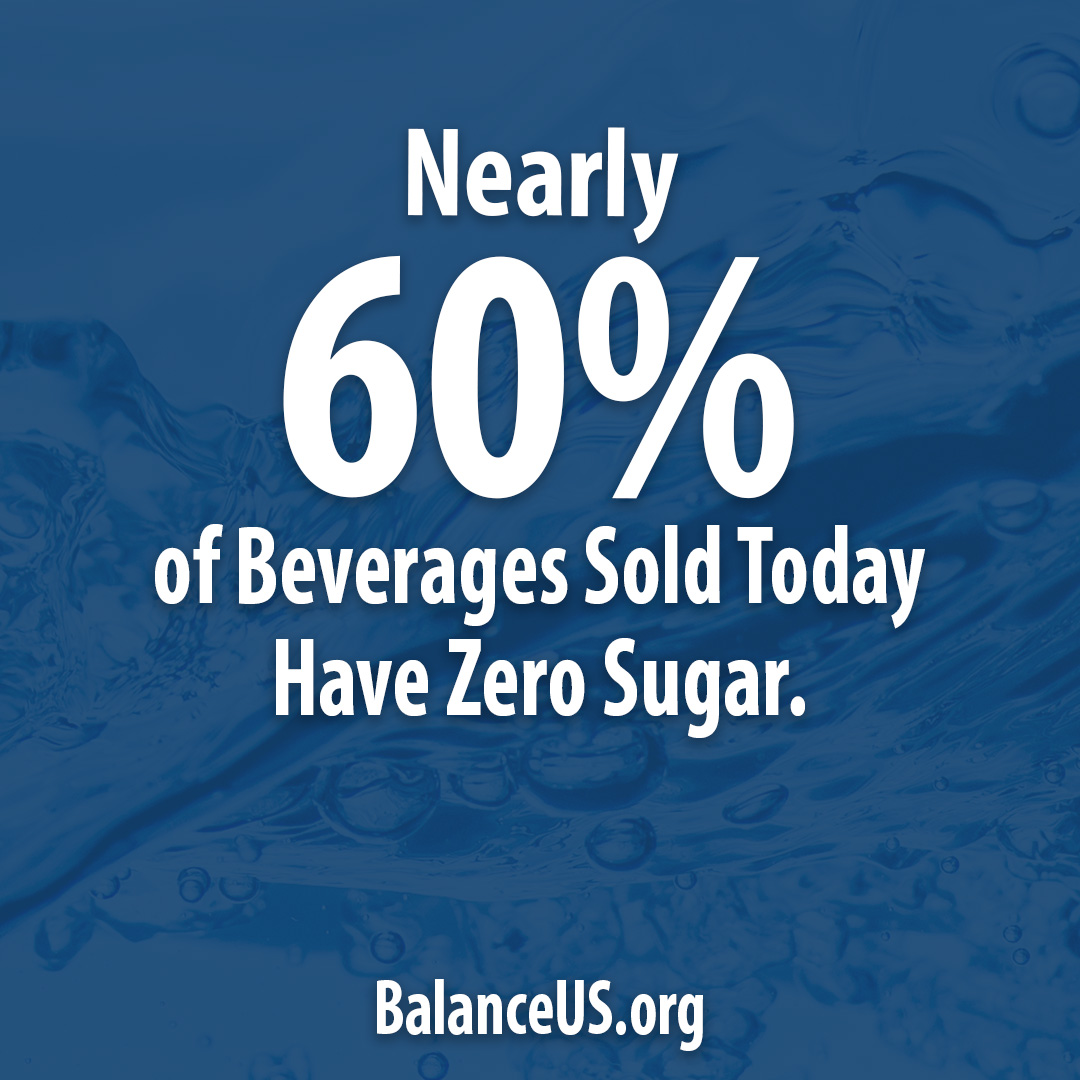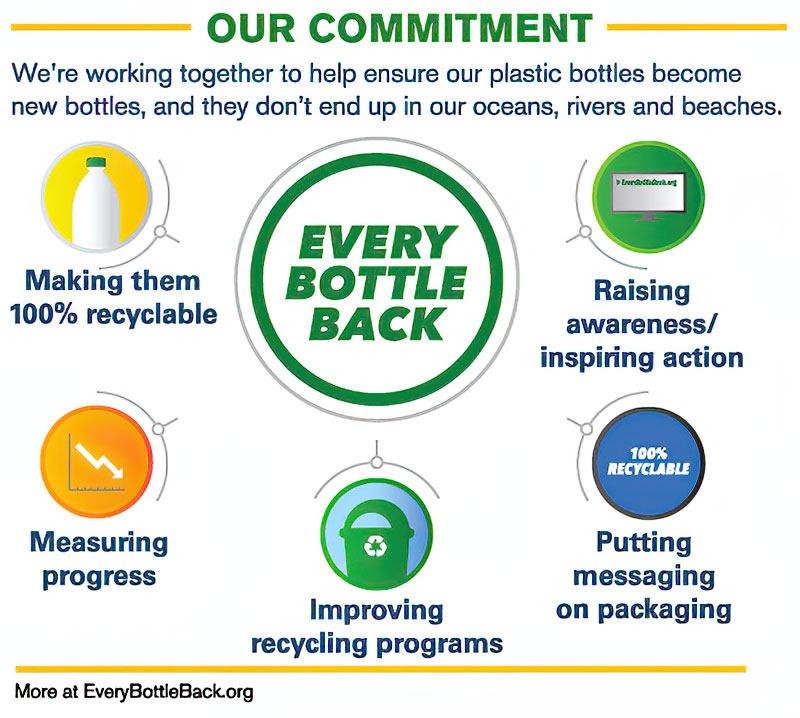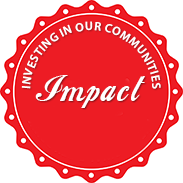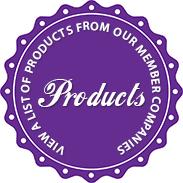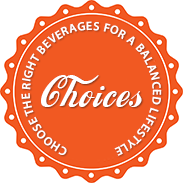News & Notes
Florida Beverage Association News
Industry News
- WhiteWave buys So Delicious brand for $195M
- FreshBev taps Ocean Spray as fruit source for cold-pressed juice line
AmeriBev Notes
- American Beverage Association Annouces New Members to its Board of Directors
- American Beverage Association Celebrates Earth Day
Sip and Savor
State Beverage News
-
Hits: 578
Water
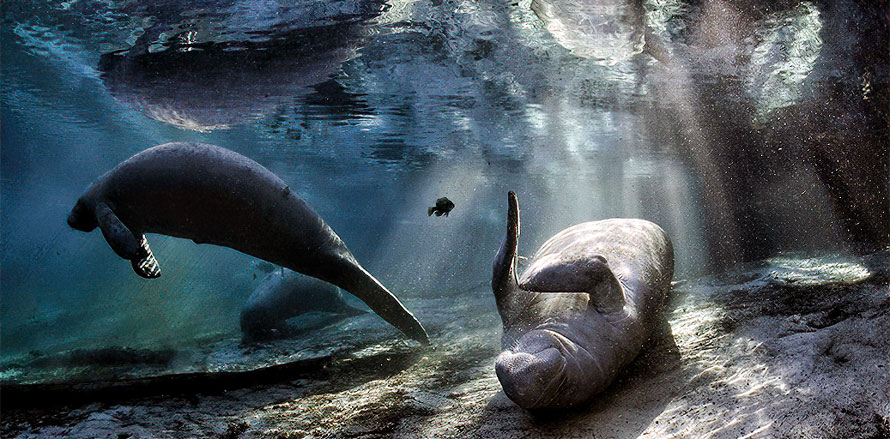
Florida’s beverage industry is committed to protecting our state’s natural environment. Our industry includes some of the world’s leaders in environmental programs and policies and we are working to develop the best water-saving technologies on the planet.
Water
We know that every drop of water counts, and we've invested heavily to improve our water conservation. We are proud to announce that we've reduced our water use ratio by 14% over five years, and are on pace to improve our water conservation rate by double digits over the next decade.
Although water is the primary ingredient in many of our beverages, the beverage industry actually uses a surprisingly small amount of water. In fact, we only use one-third of one percent of all public water use.
Our industry does its part to protect water resources by practicing sound environmental policies that:
- Protect natural resources.
- Minimize effluent, or wastewater.
- Properly clean wastewater before it is released into the environment.
- Reduce water consumption by employing water recycling systems that include recycled water in the production process wherever possible.
- Help prevent groundwater contamination.
- Enhance global water sustainability and community programs.
Bottled Water: Myths & Facts
MYTH: Bottled water is not as safe as tap water.
FACT: Bottled water and tap water are highly regulated. Bottled water is strictly regulated by the U.S. Food and Drug Administration (FDA), which imposes standards for bottled water that are as stringent and protective of public health as those set by the U.S. Environmental Protection Agency (EPA) for public drinking water systems. In addition to federal regulations, many states also impose their own regulations on the production of bottled water. All bottled water sold in the U.S. must comply with rigorous federal requirements for safety, quality and labeling.
MYTH: Bottled water is in competition with municipal water systems.
FACT: Tap water serves a variety of purposes in the typical U.S. household, including personal hygiene, clothes and dishwashing, cooking, cleaning, irrigation and drinking. Bottled water is simply another option for consumers depending on their own needs and preference.
Water is the primary ingredient in many of the beverage industry’s products and, therefore, a strong municipal water system is very important to us. Just like homeowners, we are customers of the municipal water supply, and we support its strength and viability. We wouldn’t be able to make our many different beverage products without a strong, viable local water supply.
MYTH: Most plastic water bottles end up in the waste stream.
FACT: The beverage industry’s containers are among the most recycled consumer product packaging in the nation, and are accepted in virtually all curbside and drop-off recycling programs. In fact. bottled water containers account for less than one-third of 1 percent of all waste produced in the United States. Furthermore, water, like many other food and beverage products, is packaged in polyethyl terephthalate (PET) plastic, which is one of the most recycled plastic resins worldwide.
The beverage industry agrees, however, that more needs to be done to educate consumers about the importance of recycling. For more information on our commitment to recycling, visit our recycling minisite.
MYTH: The beverage industry uses an inordinate amount of water to make its products.
FACT: While water is a key ingredient in all of our products, the beverage industry actually uses a minimal amount of water compared to other industries. In fact, we account for only 3/100th of 1 percent of all public water usage, or about 1 gallon out of every 3,300 gallons withdrawn from ground or surface water sources.
MYTH: Bottled water costs thousands of times more than tap water.
FACT: Water is not free – ever public, government-supported water supplies come at a price to consumers who use these resources. Furthermore, bottled water companies do not simply “bottle” tap or spring water. Rather, they incur significant production and operational costs to bring bottled water to market in a safe, government-approved manner. For example, purified water is created through highly sophisticated purification systems, such as distillation, deionization and reverse osmosis, all of which are designed to remove impurities and enhance the taste and flavor profile. Likewise, a significant investment is made in developing, maintaining and testing spring water sources to ensure the integrity of bottled water.
-
Hits: 12918
Every Bottle Back
Every Bottle Back
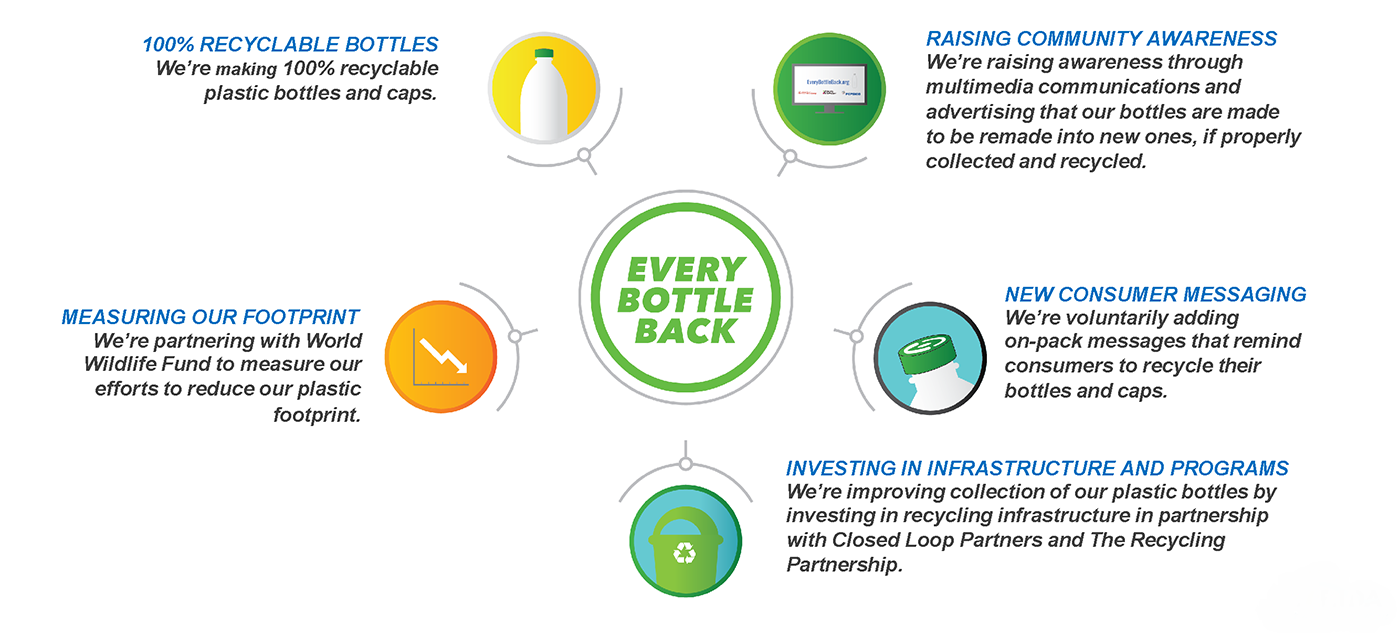 Every Bottle Back is an integrated and comprehensive initiative by America’s leading beverage companies – The Coca-Cola Company, Keurig, Dr. Pepper, and PepsiCo – alongside sustainability leaders World Wildlife Fund, Closed Loop Partners, and the Recycling Partnership to improve recycling of beverage containers and reduce the use of new plastic.
Every Bottle Back is an integrated and comprehensive initiative by America’s leading beverage companies – The Coca-Cola Company, Keurig, Dr. Pepper, and PepsiCo – alongside sustainability leaders World Wildlife Fund, Closed Loop Partners, and the Recycling Partnership to improve recycling of beverage containers and reduce the use of new plastic.
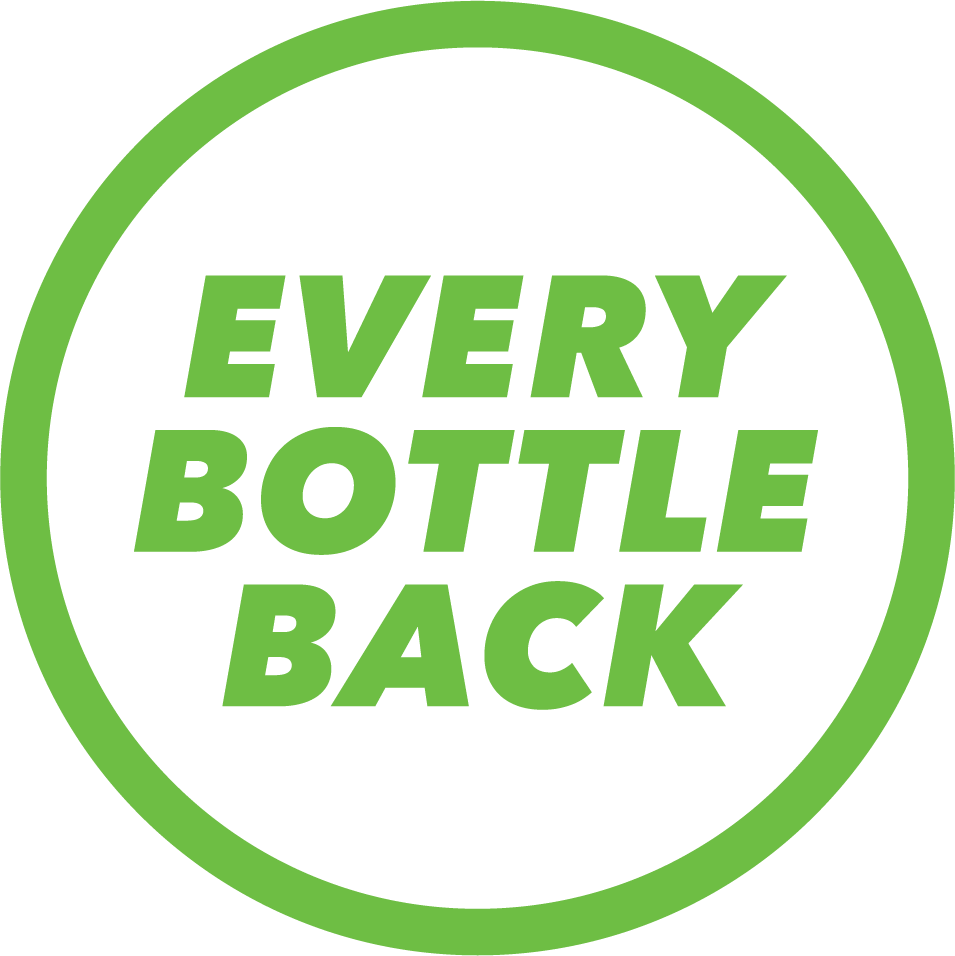 The Every Bottle Back initiative aims to reclaim beverage containers, especially our plastic bottles so they can be remade into new bottles and not end up as waste on our beaches, oceans, waterways, or landfills. We are doing this by educating consumers, reinforcing the value of our 100% recyclable bottles and caps to consumers, and making significant investments to support the circular plastics economy. The initiative is working to improve the collection of our plastic bottles and increase the amount of recycled plastic available to be remade into beverage bottles.
The Every Bottle Back initiative aims to reclaim beverage containers, especially our plastic bottles so they can be remade into new bottles and not end up as waste on our beaches, oceans, waterways, or landfills. We are doing this by educating consumers, reinforcing the value of our 100% recyclable bottles and caps to consumers, and making significant investments to support the circular plastics economy. The initiative is working to improve the collection of our plastic bottles and increase the amount of recycled plastic available to be remade into beverage bottles.
We are partnering with local governments, national organizations, and community leaders to ensure our investments meet the needs of each community. Join us as an Every Bottle Back Partner by endorsing this initiative, signing a letter of support or educating your community about recycling efforts. Together, we are working to get Every Bottle Back.
Join Our Coalition
Join our coalition and help us get every bottle back
Form Link: https://flabev.org/component/rsform/form/5-every-bottle-back
[NOTE: We can't embed this form into any page without first installing a special forms plugin designed to allow embedding in any article. However, we can't install the plugin until the platform, template, and form software are updated to their current version. The site is eight years old, the template is no longer available, and updating the Joomla platform will break any components, modules, and plugins that aren't compatible with the latest version of Joomla.]
Become an Every-Bottle-Back Partner
- Information Kit
- Endorsement form (PDF)
- How you can help (PDF)
- Reasons to support (PDF)
- Sample letter of support (PDF)
- Sample outreach letter (PDF)
- Sample resolution of support (PDF)
To learn more about how the Every Bottle Back Initiative is making an impact across the nation, visit www.EveryBottleBack.org.
-
Hits: 159
Balanced Lifestyles2
BE CLEAR ON CALORIES
 A uniform calorie label on beverages, consistent in both design and location, makes it easier for consumers to find the beverage option that’s right for them. Florida's beverage companies are placing easy-to-read calorie labels on the front of every can, bottle and pack we produce.
A uniform calorie label on beverages, consistent in both design and location, makes it easier for consumers to find the beverage option that’s right for them. Florida's beverage companies are placing easy-to-read calorie labels on the front of every can, bottle and pack we produce.
As part of the Clear on Calories Initiative, launched in 2010 in support of the “Let’s Move” anti-obesity campaign, we added an easy-to-read calorie label to the front of every can, bottle and pack we produce. The labels display the total calories per container on beverages 20 ounces or smaller. For containers larger than 20 ounces, calories are labeled per 12 ounces in most cases. On vending machines, calorie labels are right on the buttons to make it easier to choose the beverage that’s right for you
Praise for Clear On Calories
“In fact, just today, the nation’s largest beverage companies announced that they’ll be taking steps to provide clearly visible information about calories on the front of their products – as well as on vending machines and soda fountains. This is exactly the kind of vital information parents need to make good choices for their kids.”
– First lady Michelle Obama, as noted in her speech announcing the launch of “Let’s Move!” (Feb. 9, 2010)
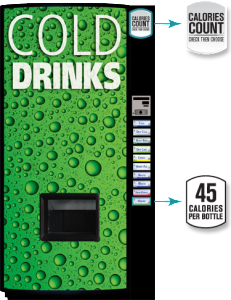
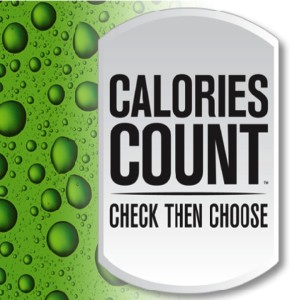
BALANCED LIFESTYLES
 Obesity is a serious and complex issue that requires the efforts of individuals, health professionals, businesses and government to solve.
Obesity is a serious and complex issue that requires the efforts of individuals, health professionals, businesses and government to solve.
Our industry understands that obesity is a global concern and we are committed to working alongside business, individuals, academia, government and community organizations to develop workable solutions to the obesity epidemic. While beverages and food play a role in determining good health, so do three main factors: genetics, diet and exercise.
No Silver Bullet in Solving Obesity
There is no silver bullet in solving the obesity issue in the U.S. Weight gain is primarily the result of an imbalance of energy—too many calories consumed versus calories expended. Since people consume many different foods and beverages, no single food or beverage is responsible for people being overweight or obese. But all calories count, whatever food or beverage they come from, including those from our caloric beverages.
Cutting Sugar in the American Diet
Working with the Alliance for a Healthier Generation, we set a bold new goal to reduce beverage calories consumed per person nationally by an additional 20% by 2025. This Balance Calories Initiative is our voluntary, long-term commitment to creating a healthier nation by changing how Americans buy and consume our products.
Part of the Solution
Coca-Cola, Dr Pepper and Pepsi are working together to give families more beverage choices with less sugar. It's an unprecedented commitment that's having a positive impact in communities nationwide. The companies are developing new and reformulated beverages and packaging, getting the word out with television ads and in-store displays, working with retailers who know their customers best and partnering with public health advocates and community organizations across the country. Watch the stories behind the largest voluntary effort to fight obesity by any industry at www.BalanceUS.org.

BEVERAGES IN SCHOOLS
School Beverage Guidelines
We have successfully changed the beverage landscape in schools across the country.
 We promised America’s parents that we would change the beverage mix in schools, and our companies – along with their school partners – have delivered dramatic and significant results. With the national School Beverage Guidelines, we removed full-calorie sodas from schools and replaced them with a range of lower-calorie, smaller-portion choices. This has been no easy feat, but it is one we are proud of and we know will have meaningful and lasting results.
We promised America’s parents that we would change the beverage mix in schools, and our companies – along with their school partners – have delivered dramatic and significant results. With the national School Beverage Guidelines, we removed full-calorie sodas from schools and replaced them with a range of lower-calorie, smaller-portion choices. This has been no easy feat, but it is one we are proud of and we know will have meaningful and lasting results.
On Aug. 16, 2012, Dr. Wescott, along with his co-authors, had a peer-reviewed data analysis published in the American Journal of Public Health. The data, which was updated to go through the end of the 2009-2010 school year, shows that industry continues to deliver in schools across America:
- Full-calorie soft drinks have been removed. Shipments of full-calorie soft drinks to schools have declined by 97 percent between 2004, the last comprehensive data available prior to the agreement, and the end of the 2009-2010 school year.
- Calories available from beverages in schools have been cut dramatically. In fact, 90 percent fewer beverage calories were shipped to schools during that time.
- We have successfully changed the beverage landscape in schools across the country. The School Beverage Guidelines provide for a range of lower-calorie, smaller-portion beverage options. As a result, the beverage mix in schools continues to shift to waters, portion-controlled sports drinks, diet drinks and 100 percent juices.
The School Beverage Guidelines are a national standard that is in place and working. We support their adoption as part of the federal regulations for competitive foods in schools.
For complete details on the guidelines visit www.ameribev.org.
-
Hits: 16688
Balanced Lifestyles
BALANCED LIFESTYLES
 Obesity is a serious and complex issue that requires the efforts of individuals, health professionals, businesses and government to solve.
Obesity is a serious and complex issue that requires the efforts of individuals, health professionals, businesses and government to solve.
Our industry understands that obesity is a global concern and we are committed to working alongside business, individuals, academia, government and community organizations to develop workable solutions to the obesity epidemic. While beverages and food play a role in determining good health, so do three main factors: genetics, diet and exercise.
No Silver Bullet in Solving Obesity
There is no silver bullet in solving the obesity issue in the U.S. Weight gain is primarily the result of an imbalance of energy—too many calories consumed versus calories expended. Since people consume many different foods and beverages, no single food or beverage is responsible for people being overweight or obese. But all calories count, whatever food or beverage they come from, including those from our caloric beverages.
Cutting Sugar in the American Diet
Working with the Alliance for a Healthier Generation, we set a bold new goal to reduce beverage calories consumed per person nationally by an additional 20% by 2025. This Balance Calories Initiative is our voluntary, long-term commitment to creating a healthier nation by changing how Americans buy and consume our products.
Part of the Solution
Coca-Cola, Dr Pepper and Pepsi are working together to give families more beverage choices with less sugar. It's an unprecedented commitment that's having a positive impact in communities nationwide. The companies are developing new and reformulated beverages and packaging, getting the word out with television ads and in-store displays, working with retailers who know their customers best and partnering with public health advocates and community organizations across the country. Watch the stories behind the largest voluntary effort to fight obesity by any industry at www.BalanceUS.org.

-
Hits: 427
Calories Count
New Calories Count Vending Program provides more choices and info
 America’s beverage companies continue to deliver for consumers in communities across America. By delivering more beverage choices, smaller portions, fewer calories and clear calorie labels, our companies are making it easier for consumers to choose the drink that is right for them and their families.
America’s beverage companies continue to deliver for consumers in communities across America. By delivering more beverage choices, smaller portions, fewer calories and clear calorie labels, our companies are making it easier for consumers to choose the drink that is right for them and their families.
Building upon previous industry initiatives, America’s leading beverage companies will work with Chicago Mayor Rahm Emanuel and San Antonio Mayor Julián Castro to launch a new Calories Count™ Vending Program. This vending machine program provides clear calorie information, encourages lower-calorie beverage choices and reminds consumers that calories count in all the choices they make. The Calories Count™ Vending Program was launched in municipal buildings in the cities of Chicago and San Antonio beginning in 2013 and then made available to customers nationwide.
 Calories Count™ Vending Program
Calories Count™ Vending Program
Under the Calories Count™ Vending Program, The Coca-Cola Company, Dr Pepper Snapple Group and PepsiCo will work with government leaders, food service operators, vending companies and other customers to:
- Increase availability of lower-calorie beverages invending machines;
- Display a “Calories Count™” vending snipe on the front of beverage vending machines reminding consumers to consider calories in their beverage choices with messages such as “Check then Choose” and “Try a Low-Calorie Beverage”; and
- Add calorie labels to the selection buttons on beverage vending machines to show calorie counts per beverage container.
Credit: American Beverage Association
-
Hits: 6147
Be Clear on Calories
 A uniform calorie label on beverages, consistent in both design and location, makes it easier for consumers to find the beverage option that’s right for them. Florida's beverage companies are placing easy-to-read calorie labels on the front of every can, bottle and pack we produce.
A uniform calorie label on beverages, consistent in both design and location, makes it easier for consumers to find the beverage option that’s right for them. Florida's beverage companies are placing easy-to-read calorie labels on the front of every can, bottle and pack we produce.
As part of the Clear on Calories Initiative, launched in 2010 in support of the “Let’s Move” anti-obesity campaign, we added an easy-to-read calorie label to the front of every can, bottle and pack we produce. The labels display the total calories per container on beverages 20 ounces or smaller. For containers larger than 20 ounces, calories are labeled per 12 ounces in most cases. On vending machines, calorie labels are right on the buttons to make it easier to choose the beverage that’s right for you
Praise for Clear On Calories
“In fact, just today, the nation’s largest beverage companies announced that they’ll be taking steps to provide clearly visible information about calories on the front of their products – as well as on vending machines and soda fountains. This is exactly the kind of vital information parents need to make good choices for their kids.”
– First lady Michelle Obama, as noted in her speech announcing the launch of “Let’s Move!” (Feb. 9, 2010)


-
Hits: 13594
School Beverage Guidelines
Our School Beverage Guidelines have reduced the amount of calories shipped to schools by 90 percent.
The Guidelines:
 Elementary Schools
Elementary Schools
- Bottled water.
- Up to 8 ounce servings of milk and 100 percent juice.
- Fat-free or low-fat regular and flavored milk and nutritionally equivalent (per USDA) milk alternatives with up to 150 calories/ 8 ounces.
- 100 percent juice with no added sweeteners, up to 120 calories / 8 ounces, and with at least 10 percent of the recommended daily value for three or more vitamins and minerals.
Middle School
- Same as elementary school, except juice and milk may be sold in 10 ounce servings.
High School
- Bottled water
- No- or low-calorie beverages with up to 10 calories / 8 ounces
- Up to 12 ounce servings of milk, 100 percent juice and certain other drinks
- Fat-free or low-fat regular and flavored milk and nutritionally equivalent (per USDA) milk alternatives with up to 150 calories / 8 ounces*.
- 100 percent juice with no added sweeteners, up to 120 calories / 8 ounces, and with at least 10 percent of the recommended daily value for three or more vitamins and minerals
- Other drinks with no more than 66 calories / 8 ounces
- At least 50 percent of non-milk beverages must be water and no- or low-calorie options.
Time of Day
- These guidelines apply to all beverages sold on school grounds during the regular and extended school day.
- The extended school day includes before and after school activities like clubs, yearbook, band, student government, drama and childcare/latchkey programs.
- These guidelines do not apply to school-related events where parents and other adults are part of an audience or are selling beverages as boosters during intermission, as well as immediately before or after an event. Examples of these events include school plays and band concerts.
-
Hits: 9110
Beverages in Schools
School Beverage Guidelines
We have successfully changed the beverage landscape in schools across the country.
 We promised America’s parents that we would change the beverage mix in schools, and our companies – along with their school partners – have delivered dramatic and significant results. With the national School Beverage Guidelines, we removed full-calorie sodas from schools and replaced them with a range of lower-calorie, smaller-portion choices. This has been no easy feat, but it is one we are proud of and we know will have meaningful and lasting results.
We promised America’s parents that we would change the beverage mix in schools, and our companies – along with their school partners – have delivered dramatic and significant results. With the national School Beverage Guidelines, we removed full-calorie sodas from schools and replaced them with a range of lower-calorie, smaller-portion choices. This has been no easy feat, but it is one we are proud of and we know will have meaningful and lasting results.
On Aug. 16, 2012, Dr. Wescott, along with his co-authors, had a peer-reviewed data analysis published in the American Journal of Public Health. The data, which was updated to go through the end of the 2009-2010 school year, shows that industry continues to deliver in schools across America:
- Full-calorie soft drinks have been removed. Shipments of full-calorie soft drinks to schools have declined by 97 percent between 2004, the last comprehensive data available prior to the agreement, and the end of the 2009-2010 school year.
- Calories available from beverages in schools have been cut dramatically. In fact, 90 percent fewer beverage calories were shipped to schools during that time.
- We have successfully changed the beverage landscape in schools across the country. The School Beverage Guidelines provide for a range of lower-calorie, smaller-portion beverage options. As a result, the beverage mix in schools continues to shift to waters, portion-controlled sports drinks, diet drinks and 100 percent juices.
The School Beverage Guidelines are a national standard that is in place and working. We support their adoption as part of the federal regulations for competitive foods in schools.
For complete details on the guidelines visit www.ameribev.org.
-
Hits: 13800
Florida Economic Impact
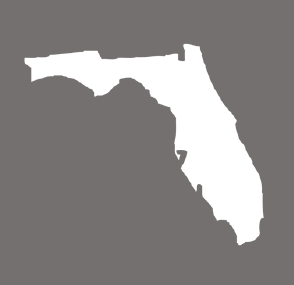 The Beverage Industry is a Major Contributor to Florida’s Economy.
The Beverage Industry is a Major Contributor to Florida’s Economy.
Florida’s beverage companies manufacture and distribute some of the most popular nonalcoholic beverages in the world. From products in your neighborhood store to our support of local community initiatives, our presence is felt in every community across the state. We play an important role in the state’s economy by providing good-paying jobs, paying significant tax dollars to the state and federal government, and making generous charitable contributions to organizations across the state.
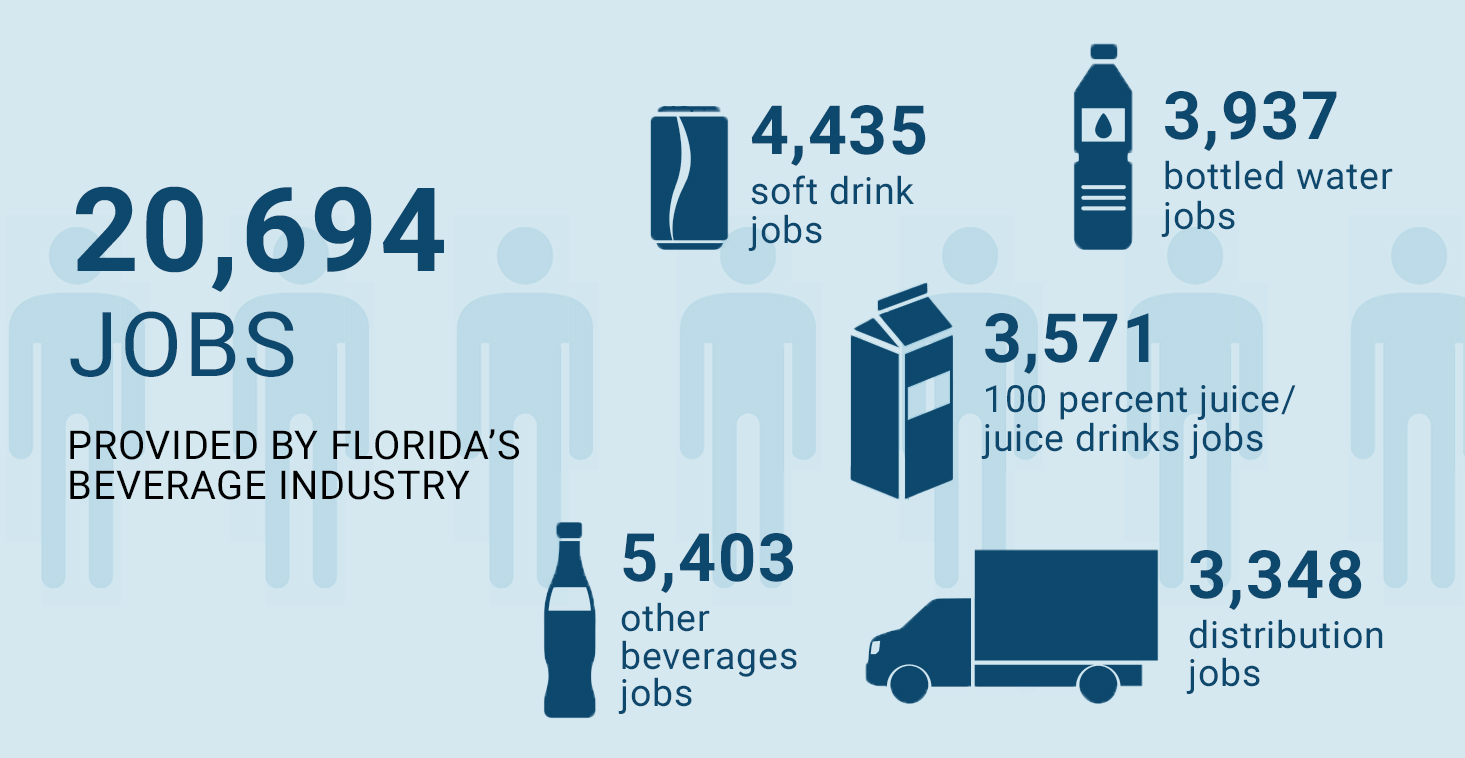
Benefiting Local Businesses
 America’s beverage industry supports a number of other business sectors and their employees throughout the state. In fact, nearly 94,000 workers in restaurants, grocery stores, convenience stores, movie theaters and more depend, in part, on beverage sales for their livelihoods.
America’s beverage industry supports a number of other business sectors and their employees throughout the state. In fact, nearly 94,000 workers in restaurants, grocery stores, convenience stores, movie theaters and more depend, in part, on beverage sales for their livelihoods.
Making An Economic Impact
 With a direct economic impact of $14.8 billion, Florida’s beverage industry provides more than $1.6 billion in wages and benefits and contributes $703.3 million in state taxes and $2.6 billion at the federal level.
With a direct economic impact of $14.8 billion, Florida’s beverage industry provides more than $1.6 billion in wages and benefits and contributes $703.3 million in state taxes and $2.6 billion at the federal level.
Investing in Our Communities
 We live our values by championing community programs that promote nutrition, physical activity, health, wellness, and environmental sustainability. One way the Florida Beverage Association does this is through our statewide grant program, now in its eighth year. In addition, Florida's beverage companies and their employees generously contribute $124.5 million to charitable causes across the state.
We live our values by championing community programs that promote nutrition, physical activity, health, wellness, and environmental sustainability. One way the Florida Beverage Association does this is through our statewide grant program, now in its eighth year. In addition, Florida's beverage companies and their employees generously contribute $124.5 million to charitable causes across the state.
Resources
- Download the 2023 Florida Economic Impact Report (requires Adobe® Reader)
WE ARE AMERICAN COMPANIES MAKING AMERICAN PRODUCTS WITH AMERICAN WORKERS IN AMERICA’S HOMETOWNS.
Prepared by John Dunham & Associates, April 2023
-
Hits: 17673
Designing 100% Recyclable Plastic Bottles
Our plastic bottles are made to be remade, not to end up in waterways and landfills. Learn how we’re helping reduce the use of new plastic.



